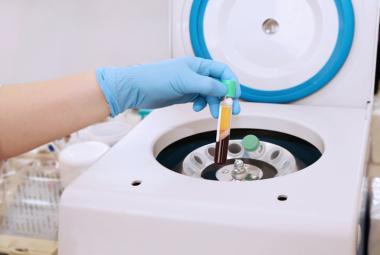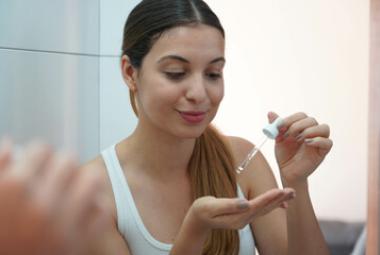For breastfeeding mothers experiencing vaginal infections, there are multiple safe medications available. But when a mom develops a recurrent vaginal infection and resistance to first line agents, she has limited options. Is boric acid safe to use in lactating mothers with recurrent vaginal infections?
In This Article
Treatment of Vaginal Infections
Efficacy of Boric Acid in Treatment of Vaginal Infections
Safety of Boric Acid in Lactating Mothers
Types of Vaginal Infections
While there are many types of vaginal inflammation, two of the most common infections include Bacterial Vaginosis and Yeast Infections. Both may have symptoms of vaginal itching, burning, and discomfort; however, the two infections are accompanied by different discharge colors and odors.[1]
Bacterial Vaginosis (BV) is the most common cause of vaginal discharge worldwide. It occurs due to the overgrowth of anaerobic bacteria in the vagina. Differentiating symptoms of a BV infection include thin yellow, white, or green-colored discharge and a fishy odor.
Alternatively, vaginal yeast infections are fungal, commonly caused by the Candida species, giving this infection the name Candidiasis. Discharge from yeast infections is typically white, thick, and clumpy, and there is no specific associated odor.
Recurrence, by definition, reflects a failure to eradicate the previous infection or failure to re-establish the normal vaginal flora. Lactobacillus is the most common bacteria found in healthy vaginal flora. Reinfection is possible, but it is much less likely to occur than recurrent infection.[2]
Treatment of Vaginal Infections
First line treatment options have been established by the CDC and IDSA for vaginal infections; however, there are limited recommendations specific to therapy during lactation.[3, 4]
The following treatment agents are organized by indication. When a medication is available without a prescription, it is labeled as “OTC”. Each treatment has been assigned a lactation safety rating based on the following scale:
| Lactation Safety Rating | Expected Risk to a Breastfeeding Infant |
| L1 | Compatible (little to no risk) |
| L2 | Likely compatible (limited risk) |
| L3 | Probably compatible (use only if risk is justified) |
| L4 | Possible hazardous (possible risk) |
| L5 | Hazardous (avoid if at all possible) |
Recommended agents for symptomatic BV (first occurrence):
- Oral metronidazole (L2), OR
- Topical metronidazole (L2), OR
- Topical clindamycin cream (L2)
Preferred agents for women with multiple recurrences of BV:
- 7-day course of oral metronidazole (L2) or tinidazole (L3),
- THEN
- 21-day course of intravaginal boric acid (L3*, OTC); AND
- 4-6 months of topical metronidazole (L2)
Recommended agents for Candidiasis (first occurrence):
- Topical miconazole (L2, OTC) or metronidazole (L2), OR
- Single oral dose of fluconazole (L2)
Alternative agents for Candidiasis in women unresponsive to azole agents:
- 14-day course of intravaginal boric acid (L3*, OTC), OR
- 14-day course of nystatin intravaginal suppositories (L1), OR
- 14-day course of flucytosine cream (L4) +/- amphotericin B cream (L3)
Preferred agents for women with multiple recurrences of Candidiasis:
- 10-14 days of induction therapy with
- Topical miconazole (L2, OTC), OR
- Topical metronidazole (L2), OR
- oral fluconazole (L2);
- THEN 6-month course of oral fluconazole (L2)
*For breastfeeding women, we recommend partially supplementing breastfeeding with formula or stored milk if intravaginal boric acid will be used for more than 7 days, or the infant is high-risk.
Efficacy of Boric Acid in Treatment of Vaginal Infections
Regarding the efficacy of boric acid treatment, studies show boric acid has a comparable mycological cure rate compared to azoles (like fluconazole and itraconazole).[5, 6] Additionally, continuous boric acid treatment may prevent relapses of vulvovaginal candidiasis. However, if the boric acid therapy is stopped, there is limited efficacy in preventing recurrent infection or data on long-term safety.[6]
Boric acid vaginal suppositories are available over the counter to treat vaginal infections. However, lactating women in particular should consult their healthcare providers before initiating this self-treatment method. If you have boric acid in your home, it must be stored in a safe place away from children. While severe and fatal poisoning is rare following acute oral ingestion, chronic oral ingestion of boric acid is lethal.[7] Symptoms of mild to moderate toxicity include nausea, vomiting, and diarrhea, and symptoms of severe toxicity include dehydration, hypotension, seizures, coma, acute renal failure, and more.
Safety of Boric Acid in Lactating Mothers
There is inadequate data available regarding the infant safety of intravaginal boric acid in lactating women. In pregnant mice, rats, and rabbits, excessive doses of oral boric acid resulted in fetal weight reduction and malformations. These developmental toxicities occurred below maternally toxic levels in rats (163 mg/kg/day) and at or above maternally toxic levels in mice and rabbits (250 mg/kg/day) from oral dosing.[8] For a 140-pound woman to reach the maternal toxicity level witnessed in a rat, she would have to consume over 10,000 mg of boric acid orally.
In treating vaginal infection, the recommended 600 mg boric acid vaginal suppositories have primarily local effects in the vagina, demonstrating only 6% systemic absorption in clinical studies.[9] However, women must speak to their healthcare providers before initiating this self-treatment method. The systemic 36 mg (6%) is distributed throughout the woman’s blood plasma compartment. In a breastfeeding mom, the small boric acid molecule will also easily distribute into her breastmilk. The absolute infant exposure to boric acid via breastmilk is likely quite small compared to therapeutic doses but is still concerning. Potential infantile side effects to watch out for include changes in mental status, vomiting or diarrhea, jaundice, and rash.[7]
For short durations (< 7 days), intravaginal boric acid poses little harm to a breastfed infant. Special precautions should be used in infants who are premature or have problems with renal development. With treatment > 7 days, infant risk may start to increase, particularly for infants being exclusively breastfed prior to the introduction of solids. To limit risk, consider reducing the amount of fresh breastmilk provided to the infant while taking boric acid. Lactating mothers may supplement these infants’ feedings with formula, stored breastmilk, or donated breastmilk. Of note, a waiting period after each dose is unlikely to reduce risk due to boric acid’s long 20-hour half-life.[10]
Conclusion
Boric acid vaginal suppositories in lactating women are not likely to cause significant harm when limited duration of 7 days and dose of 600 mg daily. Boric acid may be considered for up to 21 days with breastmilk modification of half mom’s milk and half supplemental formula or donated breastmilk. A duration of greater than 21 days is not recommended in breastfeeding women.
Emily Conard, PharmD Candidate 2023, MBA
Kaytlin Krutsch, PharmD, MBA, BCPS
References
- Paladine, H.L. and U.A. Desai, Vaginitis: Diagnosis and Treatment. Am Fam Physician, 2018. 97(5): p. 321-329.
- Swidsinski, A., et al., An adherent Gardnerella vaginalis biofilm persists on the vaginal epithelium after standard therapy with oral metronidazole. Am J Obstet Gynecol, 2008. 198(1): p. 97 e1-6.
- Workowski, K.A., et al., Sexually Transmitted Infections Treatment Guidelines, 2021. MMWR Recomm Rep, 2021. 70(4): p. 1-187.
- Pappas, P.G., et al., Clinical Practice Guideline for the Management of Candidiasis: 2016 Update by the Infectious Diseases Society of America. Clin Infect Dis, 2016. 62(4): p. e1-50.
- Ray, D., et al., Prolonged (3-month) mycological cure rate after boric acid suppositories in diabetic women with vulvovaginal candidiasis. J Infect, 2007. 55(4): p. 374-7.
- Guaschino, S., et al., Efficacy of maintenance therapy with topical boric acid in comparison with oral itraconazole in the treatment of recurrent vulvovaginal candidiasis. Am J Obstet Gynecol, 2001. 184(4): p. 598-602.
- Borates. Poisindex.
- Heindel, J.J., C.J. Price, and B.A. Schwetz, The developmental toxicity of boric acid in mice, rats, and rabbits. Environ Health Perspect, 1994. 102 Suppl 7: p. 107-12.
- Mittelstaedt, R., et al., Data on Safety of Intravaginal Boric Acid Use in Pregnant and Nonpregnant Women: A Narrative Review. Sex Transm Dis, 2021. 48(12): p. e241-e247.
- Iavazzo, C., et al., Boric acid for recurrent vulvovaginal candidiasis: the clinical evidence. J Womens Health (Larchmt), 2011. 20(8): p. 1245-55.







